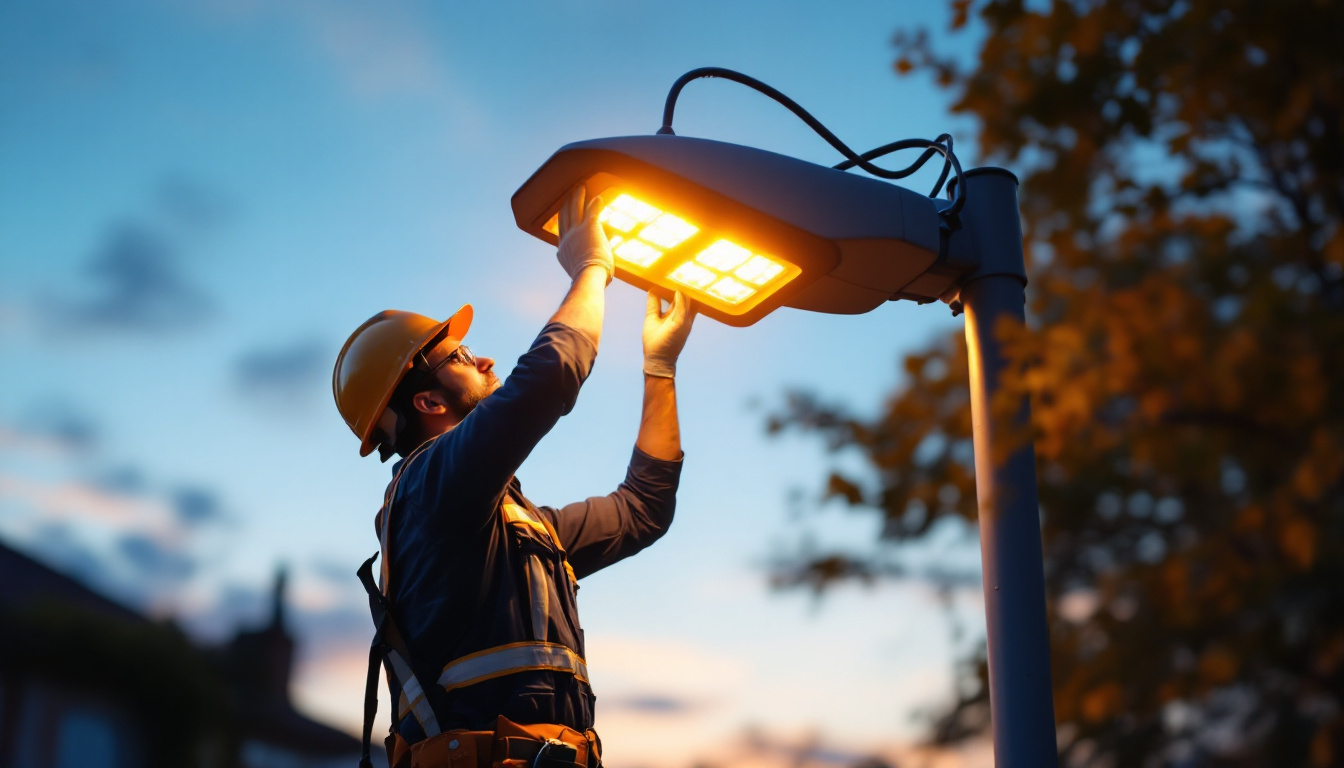
As the demand for energy-efficient lighting solutions continues to rise, LED technology has become a staple in the lighting industry. For lighting contractors, understanding the nuances of LED ballasts is crucial for successful installations and satisfied clients. This article delves into the essential do’s and don’ts that every lighting contractor should keep in mind when working with LED ballasts.
LED ballasts play a pivotal role in regulating the current and voltage supplied to LED fixtures. Unlike traditional fluorescent ballasts, which can be bulky and inefficient, LED ballasts are designed to optimize performance while minimizing energy consumption. Understanding their function is key for contractors aiming to provide high-quality lighting solutions. As the demand for energy-efficient lighting continues to grow, the significance of LED ballasts becomes even more pronounced, making them an essential component in modern lighting systems.
An LED ballast is an electronic device that controls the electrical current flowing to LED lights. It ensures that the LEDs receive the correct voltage and current, which is essential for their longevity and efficiency. Unlike traditional ballasts that may flicker or hum, LED ballasts provide a stable light output, enhancing the overall quality of illumination. This stability not only improves the aesthetic appeal of a space but also contributes to a more comfortable environment, reducing eye strain and fatigue for occupants.
Utilizing LED ballasts comes with numerous advantages. Firstly, they significantly reduce energy consumption, which translates to lower utility bills for clients. Secondly, LED ballasts have a longer lifespan compared to traditional options, reducing maintenance costs and the frequency of replacements. Lastly, they offer better dimming capabilities, allowing for more versatile lighting designs. In addition to these benefits, LED ballasts also support a range of smart lighting technologies, enabling integration with building management systems and enhancing energy efficiency even further. This adaptability makes them an ideal choice for both residential and commercial applications, where lighting needs may vary throughout the day.
Moreover, the environmental impact of LED ballasts is another compelling reason for their adoption. By consuming less energy, they contribute to a reduction in greenhouse gas emissions, aligning with global sustainability goals. Many manufacturers are also focusing on creating LED ballasts from recyclable materials, further promoting eco-friendly practices. As clients become more environmentally conscious, offering solutions that include LED ballasts can enhance a contractor’s reputation and appeal, positioning them as a forward-thinking choice in the competitive lighting market.
When working with LED ballasts, there are several best practices that lighting contractors should adhere to. These do’s not only ensure a successful installation but also enhance customer satisfaction and project efficiency.
Before selecting an LED ballast for a project, it is imperative to thoroughly understand the specifications. This includes the wattage, voltage, and compatibility with the LED fixtures being used. Each LED fixture may have different requirements, and using the wrong ballast can lead to poor performance or even damage to the lighting system. Additionally, understanding the thermal management of the ballast is crucial, as overheating can significantly reduce the lifespan of both the ballast and the LED fixtures. Familiarizing oneself with the manufacturer’s guidelines and installation manuals can provide valuable insights into optimal performance parameters.
Investing in high-quality LED ballasts is essential for long-term success. While it may be tempting to choose cheaper options, inferior products can lead to frequent failures and increased maintenance costs. Opt for reputable manufacturers that offer warranties and have a proven track record in the industry. Quality products not only enhance performance but also build trust with clients. Furthermore, consider the importance of customer support from manufacturers; having access to knowledgeable representatives can be invaluable when troubleshooting issues or seeking advice on product selection. This level of support can greatly enhance the contractor’s ability to deliver a seamless installation experience.
Environmental considerations are becoming increasingly important in the lighting industry. When selecting LED ballasts, choose products that are energy-efficient and environmentally friendly. Look for certifications such as Energy Star or DesignLights Consortium (DLC) that indicate compliance with energy efficiency standards. This not only benefits the environment but also appeals to clients who are conscious of their carbon footprint. Additionally, consider the lifecycle impact of the products being used; opting for ballasts that are recyclable or made from sustainable materials can further enhance a project’s environmental credentials. As sustainability becomes a key selling point, being proactive in this area can set contractors apart in a competitive market.
While there are many practices to embrace, there are also common pitfalls that lighting contractors should avoid when working with LED ballasts. Recognizing these don’ts can save time, money, and frustration.
One of the most significant mistakes a contractor can make is overlooking compatibility between the LED ballast and the fixtures. Not all LED lights are designed to work with every ballast. Ignoring this can lead to flickering, buzzing, or even complete failure of the lighting system. Always check the compatibility specifications before making a purchase. Additionally, it’s essential to consider the wattage and voltage ratings of both the ballast and the LED fixtures. Mismatched ratings can not only compromise performance but also pose safety hazards, potentially leading to electrical fires or equipment damage.
Proper installation is crucial for the performance of LED ballasts. Many contractors make the mistake of skipping the manufacturer’s installation guidelines, which can lead to improper connections and reduced efficiency. Take the time to read and follow the instructions carefully to ensure a successful installation. Furthermore, it’s advisable to familiarize yourself with the specific wiring diagrams provided by the manufacturer. This knowledge can help avoid common installation errors and ensure that the system operates at peak efficiency. Remember, a well-installed system not only enhances performance but also extends the lifespan of the lighting components.
After installation, testing the lighting system is a critical step that should never be overlooked. Conducting thorough tests ensures that the LED ballasts are functioning correctly and that the lighting meets the desired specifications. This step can prevent costly callbacks and enhance customer satisfaction. In addition to basic functionality tests, consider performing a load test to evaluate how the system handles varying electrical demands. This can help identify any potential issues that may arise under different operating conditions, ensuring a more reliable and efficient lighting solution for your clients.
Even with the best practices in place, challenges can arise when working with LED ballasts. Understanding these common issues can help contractors navigate potential pitfalls more effectively.
Flickering lights are one of the most frequent complaints associated with LED ballasts. This issue can arise from several factors, including incompatible ballasts, poor connections, or insufficient power supply. To address flickering, ensure that the ballast is compatible with the LED fixtures and check all wiring connections for any loose or damaged components.
Overheating can lead to premature failure of LED ballasts. This problem often occurs when the ballast is not adequately ventilated or is placed in a location with high ambient temperatures. To mitigate overheating, ensure that the ballast is installed in a well-ventilated area and consider using ballasts that have built-in thermal protection features.
Contractors may encounter situations where LED ballasts fail sooner than expected. This can be attributed to several factors, including poor-quality products, incorrect installation, or environmental conditions. To avoid this issue, always choose high-quality ballasts and follow the manufacturer’s guidelines for installation and usage.
The lighting industry is continually evolving, and staying informed about emerging trends is essential for contractors. Understanding these trends can provide a competitive edge and enhance service offerings.
Smart technology is making its way into the lighting sector, and LED ballasts are no exception. Smart ballasts can be integrated with building management systems, allowing for remote monitoring and control of lighting systems. This innovation not only enhances energy efficiency but also provides valuable data for optimizing lighting performance.
Wireless control systems are becoming increasingly popular in commercial and residential lighting applications. LED ballasts that support wireless control allow for easier installation and greater flexibility in lighting design. Contractors should consider these systems as they offer enhanced convenience for clients and can lead to more efficient lighting solutions.
As the push for sustainability continues, integrating LED ballasts with renewable energy sources, such as solar panels, is gaining traction. This trend not only reduces reliance on traditional energy sources but also appeals to environmentally conscious clients. Contractors should explore options for integrating LED systems with renewable technologies to meet the growing demand for sustainable solutions.
In conclusion, LED ballasts are an integral component of modern lighting systems, and understanding their do’s and don’ts is essential for lighting contractors. By prioritizing quality, ensuring compatibility, and staying informed about industry trends, contractors can enhance their service offerings and provide clients with efficient, reliable lighting solutions. Embracing best practices and avoiding common pitfalls will lead to successful installations and satisfied customers, ultimately contributing to the contractor’s reputation and business growth.
As the lighting industry continues to evolve, staying informed and adaptable will be key to navigating the changes and challenges that lie ahead. By investing in knowledge and quality products, lighting contractors can position themselves as leaders in the field, ready to meet the demands of a changing market.
Ready to elevate your lighting projects with the highest quality LED ballasts? Look no further than LumenWholesale, where we specialize in providing spec-grade lighting products at unbeatable wholesale prices. Say goodbye to local distributor markups and hello to superior lighting solutions that fit your budget. Our extensive selection is designed to meet rigorous industry standards, ensuring you deliver reliable and high-performance lighting to your clients. Plus, with the convenience of free shipping on bulk orders, you can enjoy the best value without any hidden fees. Make the smart choice for your lighting needs and experience the best in wholesale lighting value with LumenWholesale today.

Discover how lighting contractors are transforming barns into functional and aesthetically pleasing spaces with innovative lighting solutions.

Discover the illuminating secrets of lighting contractors as they master the art of streetlights LED transformation.

Discover the pivotal role of fluorescent lighting in modern construction with our in-depth exploration tailored for lighting contractors.

Discover how 8-foot light fixtures are transforming lighting contractors’ projects with enhanced efficiency and design flexibility.